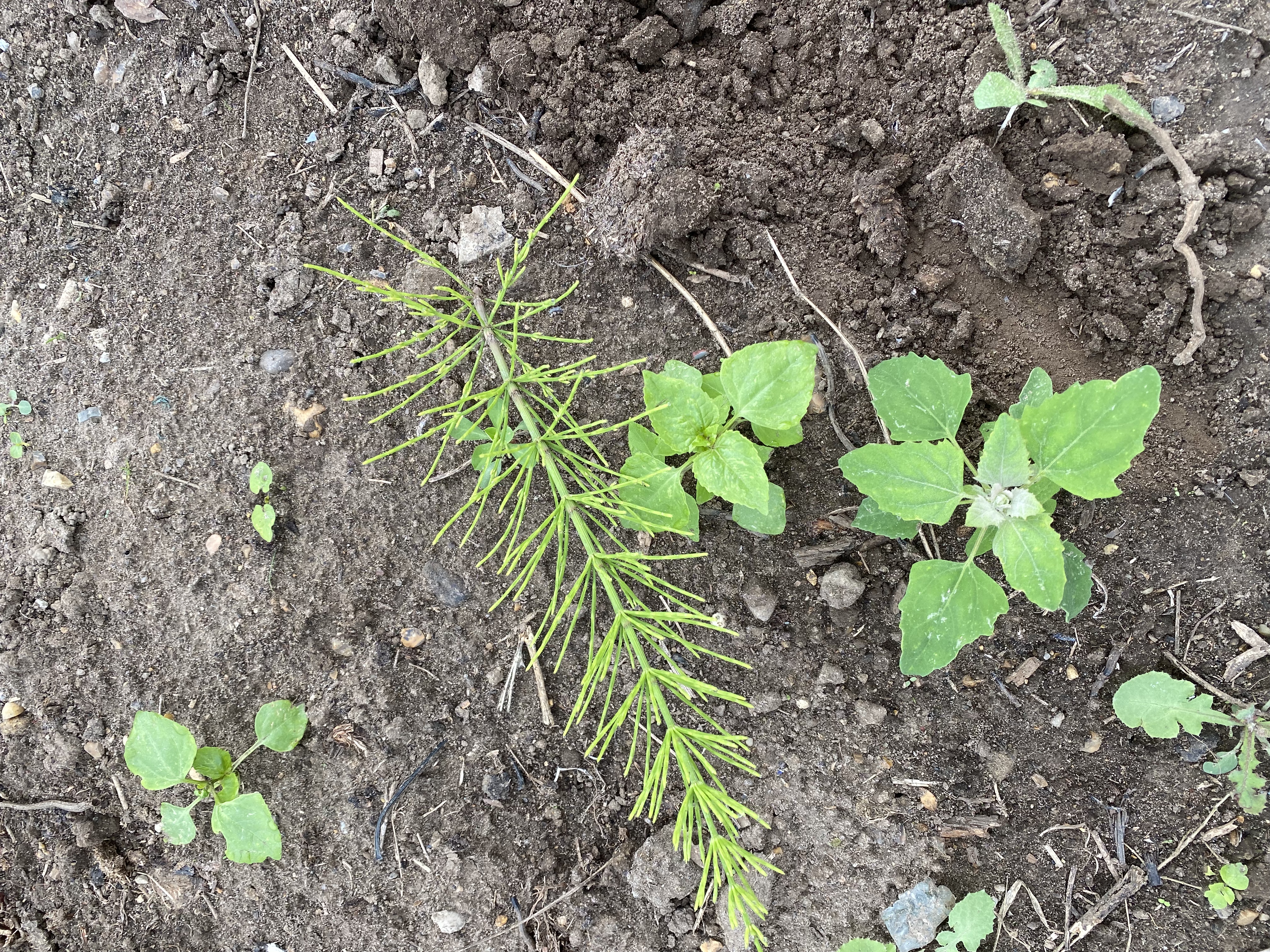Weeds you don't want to find on your allotment
LATEST UPDATE Wednesday 18th September 2021
ANY COMNERCIAL WEEDKILLER SHOULD ONLY BE PURCHASED AND APPLIED BY A LICENCED OPERATOR
THIS IS PARTICULARLY IMPORTANT ON ANY ALLOTMENTS
Learning to recognize and understand these weeds goes some way to dealing with the problem
I will expand and include pictures and treatments as I can find them
Japanese Knotweed
Thistle
Bindweed (Morning Glory)
Sword Grass (Cooch Grass)
All of the above require complete and diligent removal-the tiniest fragment of root left in the ground will regrow.
Use of a Rotavator on plots that show ANY areas of any of these weeds is not recommended. Failure to heed this advice may spread the issue dramatically !!
Japanese Knotweed
It is now a criminal offence to cause the spread of this pernicious weed, it is considered destructive and almost impossible to eradicate, it will penetrate tarmac and even concrete in its search for daylight.
Mare's Tail
A particularly pernicious weed which is extremely difficult to eradicate, it is resistant to most commercial weed killers and those that are available are extremely expensive-beyond the means of many plot holders- even these products frequently may require numerous appplications.
This weed is the scourge of allotments, tends to grow in otherwise poor dryish that is neglected soil, or in Boggy ground where for some reason it's referred to as Mare's Tail?
(it's the same weed) 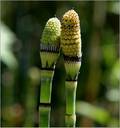


early spring appearance when these innocuous looking stems first appear, they produce the spores (tiny dust like particles almost invisble to the eye)
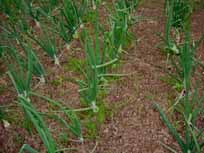
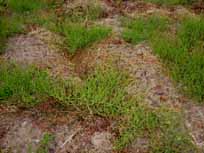
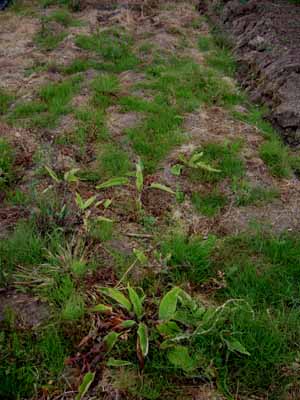
Horse or Mares Tail,( Equisetum Arvense )is, in my opinion, public enemy number one. It looks like it belongs in Jurassic Park and, unchecked, spreads like wildfire.
In spring, brown green shoots appear with small cones at the tips that produce spores. (Arghh – millions of ‘em these spores get on boots, clothing and any tools used and just spread everywhere ) and it grows away from creeping thin brown roots that you can hardly see as they are soil coloured. Digging out these roots is not feasible – they go down into the soil for up to 1.5 metres – yes, 5 feet.
Later the ‘leaves or fronds(like mini pine trees)’ or tails appear. These will die off as autumn turns to winter and the roots sit there waiting for spring. The leaves have a waxy coating of silicon , and because of this silicon it makes the plant highly resistant to any penetration of weedkillers.
I will suggest several options to deal with this and many other persistent and difficult weeds
Organic control method
Before we go into using chemicals and many tenants are, understandably, averse to such intervention and with good reason.
GIANT MARIGOLDS (the flowers not the washing up gloves) have been proven to be loathsome to’ Horsetail’
Mares Tail cannot tolerate being in the same vicinity of these flowers
It has to be worth a try spread some "MARIGOLD" seeds around the weed area at least it will give a good splash of colour to the plot. Should the Marigolds get out of hand they are at least easy to deal with
Another method suggested by a colleague and worth trying -is to crush the stems -you may use a Roller or your feet-be sure to wash any conact surface thoroughrly, then spray with a 50/50 solution spirit vinegar and water
Any Chemical option demands an assured 24 hour
dry weather window
For those who wish to use the chemical challenge, a commercial product called "Kurtail Gold" may be sourced from some internet sites. [This product constitutes as a COMMERCIAL product and should only be applied by a trained professional] applied strictly according to ALL safety instructions
Please be aware, this is NOT a cheap-quick or easy option. Around £30-40 per half litre bottle: coverage MAYBE half a standard plot 100 Sq mtrs . This product is best, most economically, distributed using a 5 litre watering can fitted with a SPRINKLE BAR , using a spray backpack (around £100) requires a higher product concentration (it may take 2-3 or more applications over possibly 2-3 seasons to see a significant result and then continued limited application should it somehow survive.
A few years ago I tried to convince GYGAA to invest in this product but it was "stonewalled" ?
Crushing the leaves to break up the silica coating that has supported the endurance of this weed for millemia
This action helps any weedkiller to penetrate and become absorbed but in large areas it is not so easy to crush all the leaves. I have recently been advised that by spraying the plant with a strong vinegar solution this also weakens the silica resistance to absorption do try this before applying with any chosen procedure.
I’d recommend NOT digging where there is horsetail until it is dead for sure. Otherwise it just starts springing up from the root cuttings. Horestail is the correctly applied name to the weed growing on land, whereas Mare’s tail is correctly applied to the weed growing in or near water.
Never touch Horsetail with a mechanical cultivator. If you do you will understand why it has been around for 60 million years
( Please contact the Site Secretary to request the appropriate weedkiller and application (good luck with that suggestion)
get your Site Secretary and Site Managementt Representative to "LOBBY"the GYGAA Committee to adress this issue urgently!!
A commercial product specivically designed to conain the infestation called 'Kurtail' (Used to be known as "Kibosh"
This seems to be some of the answer
It is systemic, being taken down to the roots and I understand it is neutralized/deactivated by contact with the soil. It is not approved by UK organic standards but I heard some European countries DO allow it in organic standards.
PICTURE shows effectiveness
This was the effect of 1 Application of KURTAIL on a plot on Row 5 a few years ago after just 10 days
Sadly the AA committee could not see their way to continuing the treatment hence sevwral seasons on it is as bad as it ever was .
Control and Eradication
the initial results (using Kurtail) are impressive
This 3 image series is of the area top right in the first sequence
This image adequately demonstrates the need for an accurate spray lance to ensure best results
Half hearted efforts may be absolutely ineffective.
Pressure must be applied to the Association to eradicate this weed
In the the case of 'horsetail' doing nothing may surely result in the plot becoming un-usable within a few years- and many of the other 70+ plots on the site, it can be that invasive.


